Best known for her classic detective novels, Dame Agatha Christie had a long and impressive career.
Her first novel was published in 1920, and since then, she became the best-selling fiction writer of all time and the most-translated author of all time. She also wrote the world’s longest-running play.
Her career was so significant, that in 1971, she was made a Dame by Queen Elizabeth II.
Who is Dame Agatha Christie?
Dame Agatha Christie was born on September 15, 1890, in Torquay, Devon, England. The youngest child by a decade, her childhood was a bit lonely. With few other children her age nearby, Christie spent many afternoons with her pets and imagination.
Eventually, she did meet and befriend other children, even appearing in a youth production that Christie once described as a highlight of childhood.
Even her education was unusual. Her mother wanted Christie homeschooled despite sending her older siblings to boarding school, though she was sent to more formal education after her father’s health deteriorated. And if she had her way, Christie wouldn’t have learned how to read until eight years old.
Luckily, Christie’s curiosity won, and she was reading by four. This isolated upbringing meant Christie was a voracious reader, a habit that honed her storytelling skills from a young age.
After her education, an eighteen-year-old Christie went to Egypt, where the seeds of her love for archeology were planted. When she came back to Britain, she began writing short stories, all of which were initially rejected by magazines but later were revised and published later in her career.
It was during this time that Christie began working on her first novel. She received multiple rejections, but it was her interest in detective novels that led to her writing the novel that ended up getting published featuring Hercule Poirot.
Golden Age of Detective Fiction “Queen of Crime”
Christie’s first novel, The Mysterious Affair at Styles, was published in 1920, at the very beginning of the Golden Age of Detective Fiction. Even though detective fiction started before then, the 20s and 30s were considered the height of this era.
Christie’s Poirot novels hit all the notes in these popular whodunits, including the murderer being the least likely suspect. Her novels were so popular, she was named the “Queen of Crime”, a name her estate trademarked and still use to this day.
To further entrench her status as Queen, in 1955, Christie received the first Grand Master Award by the Mystery Writers of America. She was voted the best crime writer by the Crime Writers’ Association, with The Murder of Roger Ackroyd voted as the best crime novel.
Here’s everything you ever wanted to know about Agatha Christie.
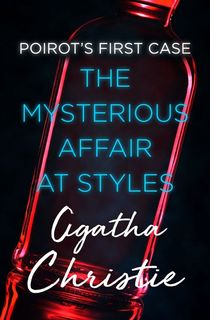
The Mysterious Affair at Styles

The Murder of Roger Ackroyd
Dame Agatha Christie books
One of the reasons Agatha Christie has been so successful is because her books manage to follow a trusted formula while giving readers plots that are original, logical, and plausible.
She ranges from the quaint English village cozy mystery to more exciting and intriguing settings. But when it came to the mystery itself, she never deviated from relying on familiar objects, such as murder weapons and clues.
It made her mysteries accessible to the average reader, allowing them to identify with the detective solving the crime and feel as if they’re in on the investigation.
How many books did Agatha Christie write?
Over the course of her career, Christie published seventy-five novels, fourteen short story collections, and several plays.
In total, her novels have sold over two billion copies worldwide. Her success is so phenomenal, that the Guinness World Records designated Christie as the best-selling fiction writer of all time.
She also wrote six novels under the pseudonym Mary Westmacott. She wanted to branch out and explore different literary avenues, and in general, these six novels enjoyed better reviews than her typical detective books.
The first book, Giant’s Bread, was first published in 1930. The only hint they gave of the identity of the author was that the book was a penname of a well-known author who had written six books that each passed 30,000 in sales.
Hercule Poirot
Hercule Poirot appeared in the second novel Christie wrote, but it was the one that got her initially published.
Influenced by Sir Arthur Conan Doyle and the Sherlock Holmes stories, Poirot was created as a fictional amalgamation of two popular literary detectives of the time. Hercule was a nod to Hercule Popeau, authored by Marie Belloc Lowndes. Poirot came from Monsieur Poirot by Frank Howel Evans.
Even his nationality, a Belgian detective solving crime in England, was influenced by the time. During the invasion of Belgium in 1914, waves of refugees made their way to the UK, where is was considered patriotic to be sympathetic to their plight.
Since his introduction, Detective Poirot has appeared in forty-seven Christie novels, fifty-one short stories, and two plays. He is her most popular, well-known, and beloved characters, boasting the adaptation and portrayal on radio, television, movies, and the stage. Despite being so liked, Christie herself lost her affection for the detective over the years, noting dissatisfaction with the character and his traits in her diaries.
Miss Marple
After enjoying some success with her Poirot books, Christie introduced a series of short stories with a rather different protagonist. Miss Jane Marple was an elderly spinster who lived and acted as an amateur detective in the small village of St. Mary Mead.
There was initial speculation that the character was based on her step-grandmother, but Christie said in her autobiography she created Miss Marple based on the “Ealing cronies” that surrounded her grandmother. The two elderly women did share some traits, however. Mainly that the two women always thought the worst of almost every situation and the people in it, and were almost always right.
Miss Marple is featured in twelve novels and twenty short stories. Her first appearance was in The Murder at the Vicarage in 1930, and her last was in Miss Marple: The Complete Short Stories published posthumously in 1985.
Best Agatha Christie Books
With so many books, it can be daunting for a new reader to figure out where to start. But we’ve got you covered. Here are some of the best Agatha Christie books.
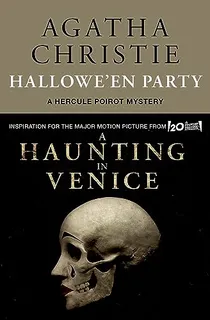
Hallowe'en Party
Originally titled Hallowe’en Party, this classic Christie novel was the inspiration for the movie, A Haunting in Venice.
When a surly thirteen year old boasts that once witnessed a murder, no one at the Halloween party believes her. She storms off, but hours later her body is found drowned in an apple-bobbing barrel. On a night known for trickery and the occult, it’s up to famed detective Hercule Poirot to uncover the truth.
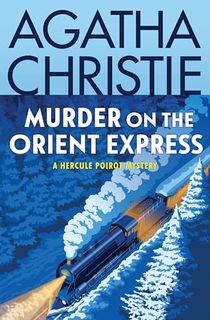
Murder on the Orient Express
As the Orient Express makes its way through the snowy Balkan mountains, an unexpected drift forces the train to stop just after midnight. In the early morning hours, one of the passengers is found dead. He was stabbed a dozen times and the door was locked from the inside. Luckily, one of the passengers is detective Hercule Poirot.
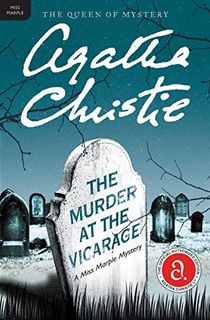
The Murder at the Vicarage
The first novel to feature elderly amateur detective Miss Jane Marple, Murder at the Vicarage launched another beloved mystery series for Christie.
The parson made an abhorrent declaration while carving a joint of roast beef. It was a thoughtless comment, but one that carried deadly consequences. When the man he spoke ill of is found dead in the clergyman’s study. Unable to keep her nose out of a good piece of gossip, Miss Jane Marple starts digging around. But the case becomes difficult when she discovers that almost the entire village had a motive to kill the late Colonel.

Giant's Bread
Giant’s Bread was the first novel Agatha Christie published under the Mary Westmacott pseudonym.
Vernon Doyle is a talented musician, maybe even a genius. But that talent doesn’t come without a price. His sheltered upbringing didn’t prepare him for the real world, and the harsh reality of his adult life weighs on him. He has to write the masterpiece that could define his career. Only to do that, he has to make a choice that might cost him everything.
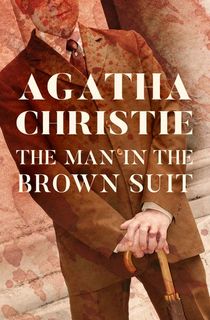
The Man in the Brown Suit
The Man in the Brown Suit starts a brief series featuring ex-Army Colonel and MI5 agent, Johnnie Race.
Anne wants an adventure. That’s why she came to London. But she doesn’t expect adventure to find her in Hyde Park Corner tube station. Only, it’s not exactly what she expected. A thin man, smelling of moth balls, loses his balance and is electrocuted on the rails. Scotland Yard declares his death an accident. But Anne still has questions. Like, who was the man in the brown suit who examined the body. And why did he run off, leaving a cryptic message in his wake?
Agatha Christie movies
The very first Agatha Christie film adaptation was The Passing of Mr. Quinn based on The Coming of Mr. Quin in 1928.
Since then, works have been adapted into television shows, movies, stage plays, BBC radio productions, graphic novels, and video games.
Over the years, she’s had almost as many. Here are a few of her more well-known movie adaptations.
Murder on the Orient Express (1974)
Filled with an all-star cast, this version of the film received six Academy Award nominations, including Best Actor. Albert Finney is one of the only actors to portray Hercule Poirot to receive a nomination for his role.
It’s largely considered one of the best adaptations, even gaining approval from the Dame herself, though she thought Finney’s mustache was too “tiny”.
Witness For The Prosecution (1957)
Another absolute must-watch is the 1957 adaptation of Christie’s short story of the same name.
Tyrone Power starred, and it was his final film role. The film landed six Academy Award nominations, including Best Picture, Director, Actor, and Supporting Actress, among others.
With powerful performances and a stunning cast, this film is a must for any Christie fan.
A Haunting in Venice (2023)
The third movie brought to the modern screen by Kenneth Branagh, A Haunting in Venice is the best of his efforts so far.
The incredible performances of the star-studded cast, coupled with visually breathtaking cinematography and a plot that leaned into the thriller vibes as much as the mystery, it’s no wonder this film was not just a box office success but received largely positive reviews.
The Mirror Crack’d (1980)
Another talented ensemble brings this Miss Marple mystery to life.
Starring Angela Lansbury, Rock Hudson, Liz Taylor, and more, it’s the perfect movie for Miss Marple fans.
As an added bonus, Pierce Brosnan fans will enjoy seeing his brief onscreen debut.
Agatha Christie TV shows
As with her movies, many of Christie’s books and short stories have been turned into television shows. They range from brief two- and three-episode miniseries, all the way to an impressive twenty-five-year run.
Here are a few must-watch shows for any Christie fan.
Miss Marple (1984 – 1992)
Over the course of eight years, all twelve Miss Marple novels were adapted in this series.
Joan Hickson played the titular protagonist, gaining not just a wide audience, but approval from Christie herself.
After all, it was after seeing Hickson in 1946 that prompted the author to write a note expressing hope that the actress would play her beloved character someday.
Agatha Christie’s Poirot (1989 – 2013)
After playing Poirot for twenty-five years, David Suchet is practically inextricable from the titular detective.
It’s the longest run for a single actor to play the detective.
Over the years, they adapted every story Agatha Christie wrote that featured detective Poirot.
The ABC Murders (2018)
Another adaptation of one of the more popular Poirot novels, The ABC Murders is a three-episode series follows the titular detective as he struggles to navigate the social crisis of rising fascism in Britain and Europe in the early 30s.
While this isn’t entirely faithful to the source material, the exploration it takes on Poirot as a character in the face of such extremes is worth the watch.
The Pale Horse (2020)
Another adaptation that strays from the source but is still worth watching, The Pale Horse is based on the 1961 novel of the same name. It’s intense and dramatic, with the perfect cast to highlight these aspects of the story.
Why Didn’t They Ask Evans (2022)
One of the lighter stories that highlights a touch of humor instead of dread, the mystery is still the focus of Why Didn't They Ask Evan?, a three-episode miniseries, ensuring that viewers will be captivated until the very end.
The cast pulls off the inexperienced sleuths in over their heads while still somehow managing to navigate the complex case in a way that is delightful to watch.
How did Dame Agatha Christie die?
In 1971, Christie’s health began to fail. She continued to write, publishing her last novel, Postern of Fate, in 1973. Her health continued to deteriorate until she died peacefully in her home, Winterbrook House, on January 12, 1976. She was eighty-five years old.
Officially, Christie died of natural causes, however, a Toronto study released in 2009 concluded that it’s possible she suffered from Alzheimer’s disease.
They studied the pattern of language and vocabulary range in her novels starting at the beginning of her career until the end, and found that her last novels showed a significant decline in both, while also increasing in repetitive phrases and indefinite word choices.
While it’s impossible to know for sure, the researchers are confident that these patterns are not indicative of normal aging. Further, the decline in these patterns began to show in her writing as early as her early 70s.
Agatha Christie: A Life in Pictures
Despite being quoted in her obituary as not being a huge fan of movies, television, or radio, a movie was made about her life in 2004.
Though the movie covers her entire life, it does focus a lot on the most intriguing part of her life: when she disappeared for eleven days in 1926. This occurred after her husband asked for a divorce so he could marry his mistress. She went into a sort of fugue state, and couldn’t recall where she went or what she did.
It's understandable that her claim of memory loss would warrant further examination, and Christie was eventually seen by two different psychiatrists.
It’s through this lens that the movie focuses on telling her story. As she recalls her childhood, the ups and downs of her life, we see her life through flashbacks to understand what caused her to disappear in the first place.
The story continues in this same tone, through flashback, but to recount the later elements of her life, instead of a psychiatrist, it’s to journalists in interviews. It’s a beautifully shot movie that captures the atmosphere of the time, but it does gloss over some elements of Christie’s life.
You can’t cover an entire person’s life in a single film, but with such emphasis on an eleven day period of time, we can’t help but wonder how much more they could have examined without such a narrow focus.

